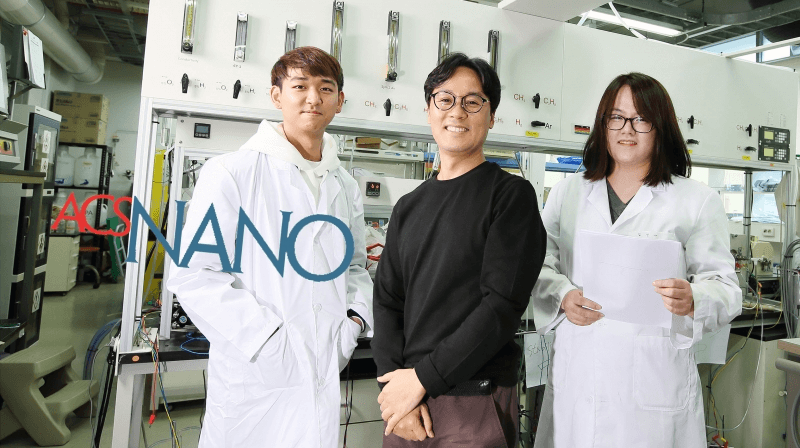Oct 26 2017
Studies of lithium-ion batteries have paved the way for plentiful probabilities in designing next-generation batteries. Specifically, the metal-air batteries—with considerably higher energy density similar to that of 1 kg of gasoline—have of late been accepted and invested in by some of the pioneering companies in the world, such as IBM.
 Professor Guntae Kim and his research team at UNIST. From left are Ohhun Gwon, Professor Kim, and Seona Kim. Credit: UNIST
Professor Guntae Kim and his research team at UNIST. From left are Ohhun Gwon, Professor Kim, and Seona Kim. Credit: UNIST
In a latest research performed at UNIST, Scientists have developed an innovative catalyst to speed up the commercialization of metal-air batteries. This advancement has been collaboratively headed by Professor Guntae Kim and Professor Jaephil Cho from the School of Energy and Chemical Engineering at UNIST in cooperation with Professor Yunfei Bu from the Nanjing University of Science and Technology, Nanjing, China. The innovative catalyst has the structure of nanofiber-based perovskite materials and possesses exceptional electrochemical performance, similar to prevalent precious metal catalysts, but is less costly.
A metal-air battery is a kind of battery or fuel cell that harnesses oxidation of a metal with oxygen from the surrounding air to generate electricity. It includes an anode formed of pure metals such as zinc or lithium, and an air cathode in contact with an inexhaustible source of air.
The catalysts included in the air cathode assist in the electrochemical interaction of the cell with oxygen gas. Metal-air batteries have gained considerable investigative attention as the future generation of high-performance batteries due to their benefits such as uncomplicated structure, exceptionally high energy density and comparatively less costly manufacturing.
Air electrodes of prevalent metal-air batteries include costly and rare metal catalysts such as iridium oxide (IrO2) and platinum (Pt), which has hampered its further commercialization.
As part of this research, Professor Kim and his colleagues have created an innovative catalyst—the cation ordered double perovskite that has high electrical conductivity and catalyic performance. They produced a sequence of PrBa0.5Sr0.5Co2-xFexO5+δ, where x = 0, 0.5, 1, 1.5, and 2, PBSCF, and ascertained the optimum iron (Fe) and cobalt (Co) contents by adopting electrochemical measurement.
The structure of mesoporous PrBa0.5Sr0.5Co2-xFexO5+δ nanofiber (PBSCF-NF) has high surface areas, result from uniform pore diameters. This nanofiber has also brought significant improvements in the performance of the oxygen reduction reaction (ORR) and oxygen evolution reaction (OER).
Ohhun Gwon, First Author of the study and Combined MS/PhD of Energy and Chemical Engineering
The Researchers stated that this nanofiber has enhanced the bi-functionality of ORR/OER. Specifically, the OER performance was enhanced to nearly 9 times greater when compared to ultra-modern precious metal oxide IrO2 at an overpotential of 0.3 V. In addition, it also exhibited significant charge-discharge stability in Zn-air batteries, even at higher current density.
We envision that the high electrochemical and catalytic performance of this material will play a major role in the commercialization of metal-air batteries. Metal-air battery technology is still in its infancy and extensive additional research efforts appear to be required before a viable commercial implementation is developed.
Professor Guntae Kim, School of Energy and Chemical Engineering, UNIST
Kim further stated, “However, as many global corporates, such as IBM, Toyota, and Samsung Electronics are already working on the development of metal-air batteries, the technical challenges could soon be cleared out in a much faster pace than anticipated.”
The outcomes of the study have been reported online in the October issue of the ACS Nano journal. The Mid-Career Researcher Program of the National Research Foundation of Korea (NRF)—funded by the Ministry of Science, ICT and Future Planning—and a 2017 Research Fund from UNIST have supported the research.